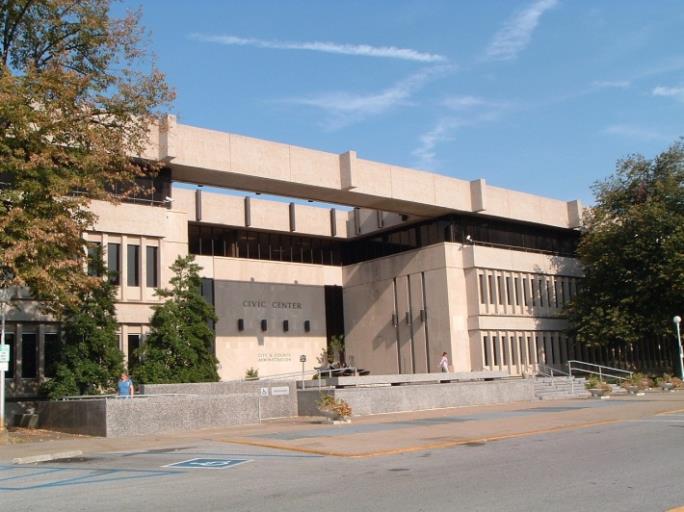‘No Pandemic Exception’
Religious liberty advocates have been swamped with requests for help.
Scottsdale, Arizona-based Alliance Defending Freedom has represented 14 churches in lawsuits and assisted more than 2,500 churches and ministries.
First Liberty Institute, based outside of Dallas, Texas, received more than a hundred requests for legal help in the first half of May, significantly more than the few dozen they would have expected so far this year, according to attorney Jeremy Dys.
One client was On Fire Christian Church in Louisville, Kentucky, which sued the city after the mayor banned outdoor drive-in services leading up to Easter in April. A judge ruled the services could go on.
“We believe that beyond any shadow of a doubt it is crucial to be able to congregate with one another,†church Pastor Chuck Salvo said in a recent interview.
But judges also have ruled against such challenges.
The U.S. Supreme Court dismissed an appeal from a California church to strike down Democratic Gov. Gavin Newsom’s restriction of places of worship to 25% capacity or no more than 100 people.
In Illinois, a federal appeals court denied two church requests to hold services in spite of Democratic Gov. J.B. Pritzker’s ban on religious gatherings. The judge said the lawsuit was ill-founded, selfish and could risk lives.
In Maine, a U.S. district judge denied a church’s motion for a temporary restraining order to allow it to hold an in-person service in early May. Democratic Gov. Janet Mills had limited gatherings to 10 people but allowed drive-in services. The judge ruled the state’s standards were uniform and did not violate the Constitution.
Most of the legal debate has revolved around consistent restrictions.
Religious groups shouldn’t be categorically exempt from government oversight, and governments have a legitimate interest to protect the public’s health, said Emilie Kao, director of the Richard and Helen DeVos Center for Religion & Civil Society at the Heritage Foundation, a conservative think tank in Washington, D.C.
“Government authorities, state or local, should be treating religion in an even-handed and fair way,†Kao said. “We’ve seen disparate treatment of religious groups, religious communities, where their ability to worship has been limited where similar-sized secular activities were allowed.â€
For example, she said, Minnesota allowed malls to reopen before religious gatherings. Under the state’s plan, retail businesses could reopen at 50% capacity May 18. Religious gatherings were allowed at 25% capacity starting May 27.
And most religious groups, she said, want to follow health recommendations and keep congregants safe.
In Wisconsin, the Catholic Diocese of Madison had advised its parishes to follow state guidelines until May, when the state Supreme Court struck down Democratic Gov. Tony Evers’ stay-at-home order.
The diocese released a plan to resume Masses at 25% capacity with distancing and other health measures, said Brent King, the diocese’s communications director. The diocese set up sanitation stations and asked congregants to sign up for Mass and refrain from congregational singing.
But officials of Dane County, which includes Madison, limited gatherings to 50 people and said it would fine churches in violation. The limit wasn’t an issue for smaller parishes, but seven of the parishes in the county can have close to a thousand attendees, King said.
So the diocese sought counsel from Becket Fund, the legal firm, which sent a letter June 3 to county officials saying the cap was unconstitutional. Two days later, officials changed the limits for religious services to 25% capacity.
“Given the virus, and now given the civil unrest, people need God,†King said in an interview. “People need God all the more right now.â€
Dane County did not want to use taxpayer dollars on a lawsuit, said County Executive Joe Parisi in a statement. “COVID-19 is here, infecting more people every day and minimizing contact in large group settings is an incredibly effective approach to staying healthy.â€
Changing Guidelines
After Trump’s news conference and detailed guidelines from the CDC that followed, a few states loosened restrictions on religious gatherings.
Guidelines lifting Minnesota’s ban on religious gatherings were released May 23, a day after the CDC’s.
Pritzker of Illinois released new guidelines May 28. The nine-page report gives a range of options for churches and advises against the riskiest activities: singing, group recitation, serving food and beverages, and person-to-person contact.
In some places, changing guidelines have led to confusion. The CDC, for one, quietly updated its guidelines within days of releasing them. The changes included removing warnings about singing as a risk for spreading the virus.
Unclear guidelines, in part, prompted a state lawmaker to introduce a bill in the Pennsylvania House to bar the governor from restricting participation in and travel to religious activities under a state of emergency.
In Wisconsin, the Catholic Diocese of Madison had advised its parishes to follow state guidelines until May, when the state Supreme Court struck down Democratic Gov. Tony Evers’ stay-at-home order.
The diocese released a plan to resume Masses at 25% capacity with distancing and other health measures, said Brent King, the diocese’s communications director. The diocese set up sanitation stations and asked congregants to sign up for Mass and refrain from congregational singing.
But officials of Dane County, which includes Madison, limited gatherings to 50 people and said it would fine churches in violation. The limit wasn’t an issue for smaller parishes, but seven of the parishes in the county can have close to a thousand attendees, King said.
So the diocese sought counsel from Becket Fund, the legal firm, which sent a letter June 3 to county officials saying the cap was unconstitutional. Two days later, officials changed the limits for religious services to 25% capacity.
“Given the virus, and now given the civil unrest, people need God,†King said in an interview. “People need God all the more right now.â€
“Given the virus, and now the civil unrest, people need God. People need God all the more right now.”
Brent King, communications director CATHOLIC DIOCESE OF MADISON
Dane County did not want to use taxpayer dollars on a lawsuit, said County Executive Joe Parisi in a statement. “COVID-19 is here, infecting more people every day and minimizing contact in large group settings is an incredibly effective approach to staying healthy.â€
Changing Guidelines
After Trump’s news conference and detailed guidelines from the CDC that followed, a few states loosened restrictions on religious gatherings.
Guidelines lifting Minnesota’s ban on religious gatherings were released May 23, a day after the CDC’s.
Pritzker of Illinois released new guidelines May 28. The nine-page report gives a range of options for churches and advises against the riskiest activities: singing, group recitation, serving food and beverages, and person-to-person contact.
In some places, changing guidelines have led to confusion. The CDC, for one, quietly updated its guidelines within days of releasing them. The changes included removing warnings about singing as a risk for spreading the virus.
Unclear guidelines, in part, prompted a state lawmaker to introduce a bill in the Pennsylvania House to bar the governor from restricting participation in and travel to religious activities under a state of emergency.





